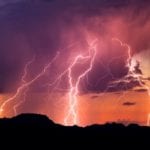 Technology
Technology  Technology
Technology  Humans
Humans 10 Everyday Human Behaviors That Are Actually Survival Instincts
 Animals
Animals 10 Animals That Humiliated and Harmed Historical Leaders
 History
History 10 Most Influential Protests in Modern History
 Creepy
Creepy 10 More Representations of Death from Myth, Legend, and Folktale
 Technology
Technology 10 Scientific Breakthroughs of 2025 That’ll Change Everything
 Our World
Our World 10 Ways Icelandic Culture Makes Other Countries Look Boring
 Misconceptions
Misconceptions 10 Common Misconceptions About the Victorian Era
 Mysteries
Mysteries 10 Strange Unexplained Mysteries of 2025
 Miscellaneous
Miscellaneous 10 of History’s Most Bell-Ringing Finishing Moves
 Technology
Technology Top 10 Everyday Tech Buzzwords That Hide a Darker Past
 Humans
Humans 10 Everyday Human Behaviors That Are Actually Survival Instincts
 Animals
Animals 10 Animals That Humiliated and Harmed Historical Leaders
Who's Behind Listverse?

Jamie Frater
Head Editor
Jamie founded Listverse due to an insatiable desire to share fascinating, obscure, and bizarre facts. He has been a guest speaker on numerous national radio and television stations and is a five time published author.
More About Us History
History 10 Most Influential Protests in Modern History
 Creepy
Creepy 10 More Representations of Death from Myth, Legend, and Folktale
 Technology
Technology 10 Scientific Breakthroughs of 2025 That’ll Change Everything
 Our World
Our World 10 Ways Icelandic Culture Makes Other Countries Look Boring
 Misconceptions
Misconceptions 10 Common Misconceptions About the Victorian Era
 Mysteries
Mysteries 10 Strange Unexplained Mysteries of 2025
 Miscellaneous
Miscellaneous 10 of History’s Most Bell-Ringing Finishing Moves
10 Events Surrounding September 11
People all over the world are familiar with what happened on September 11, 2001. On that morning, 19 al-Qaeda terrorists hijacked four US commercial passenger jet airliners and intentionally crashed two of them into the Twin Towers of the World Trade Center. The Twin Towers collapsed within two hours of being struck by the planes. Civilians from over 70 countries were killed in the attacks, with a total of 2,995 casualties. In the months before and after September 11, many important international events occurred. On October 7, 2001, the US military’s Operation Enduring Freedom was launched, starting the War in Afghanistan. This list will be documenting ten news stories and international events surrounding September 11, 2001.
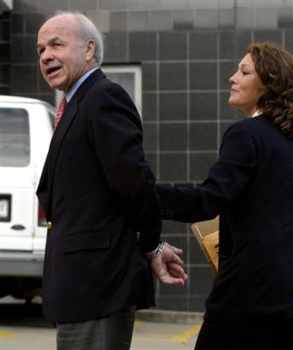
Most Americans are familiar with the failure of the Enron Corporation. Enron was an American energy company based out of Houston, Texas. In 2000, Enron was one of the largest businesses in the world. They had working operations in many areas, mainly electricity, natural gas, communications and pulp and paper. Amazingly, Enron claimed revenues of nearly $101 billion in 2000. The problems for Enron started from the beginning, when a group of executives in the company began misleading the board of directors and audit committee. They did this by hiding billions of dollars in debt, acquired from failed deals and projects. In the months following 9/11, the illegal activity caught up with Enron and the company failed. Enron stock holders lost nearly $11 billion, and the resulting scandal marked the largest bankruptcy reorganization in American history at that time.
The Enron scandal ended the business career of accounting firm Arthur Andersen. Arthur Andersen Corporation was found guilty of unlawful practice in the auditing of Enron. In October of 2001, one month after the attacks in New York and Washington, details of the Enron scandal were leaked to the world press. The story sparked a panic among Enron stock holders, and by December 2, 2001, Enron Corp. filed for one of the largest corporate bankruptcies in US history, with assets of $63.4 billion. Because of the failure, new regulations and legislation were enacted to expand the reliability of financial reporting for public companies. Many conspiracy theories have been formed around the Enron Scandal, and the date on which it was revealed to the public. Most of these claims document the ties between former Texas Governor George W. Bush and Enron founder Kenneth Lay.
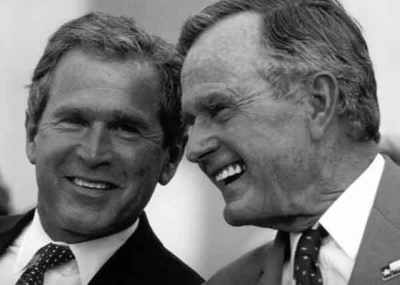
In 1972, thousands of official and unofficial FBI records were destroyed, upon the death of J. Edgar Hoover. In fact, in the past it was common practice for high ranking officials to destroy their most important business documents. For this reason, in 1974 the US Congress passed the Presidential Recordings and Materials Preservation Act, placing the presidential records of Richard Nixon in federal custody to prevent their destruction. The Act was meant to reduce secrecy at the highest levels of government, and to give historians the materials they need to perform their duties. The Presidential Records Act of 1978 expanded such protection of historical records. This was accomplished by mandating that all records of former presidents automatically become the property of the federal government upon leaving the Oval Office.
The presidential papers of Ronald Reagan and Vice President George Bush were due to be made public when George W. Bush took office in January, 2001. However, George W. Bush first delayed the release for 90 days, and then repeated the action, pushing the date back into September, 2001. On November 1, 2001, Bush issued Executive Order 13233, limiting public access to the records of former U.S. presidents. The Bush executive order also includes the documents of former vice presidents. Many people were critical of this action, claiming that it violated both the “spirit and letter of existing US laws.” The order severely curtailed public access to presidential records and added to delays in obtaining materials from presidential libraries. On January 21, 2009, Executive Order 13233 was revoked, by executive order of President Barack Obama on his first day in office. Obama essentially restored the original Executive Order 12667.
During his presidency, George W. Bush was accused of acting in violation of the Presidential Records Act of 1978. In 2007, the Bush White House e-mail controversy was revealed. The event started when George W. Bush initiated the unprecedented midterm dismissal of seven United States Attorneys, on December 7, 2006. The U.S. attorneys were replaced with interim appointees, under provisions in the 2005 USA PATRIOT Act reauthorization. Following the action, a congressional request was called looking for documents indicating why the attorneys were fired. This caused the Bush administration to reveal the fact that not all internal White House emails were available, because they were sent via a non-government domain, that was hosted on an e-mail server not controlled by the federal government. In 2009, it was announced that as many as 22 million emails may have been deleted by the Bush administration.
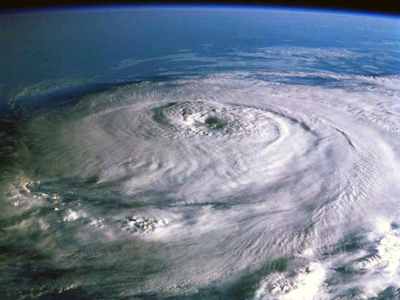
Hurricane Erin was the first, and longest lived, hurricane in the 2001 Atlantic hurricane season. The storm developed from a tropical wave on September 1, 2001, and by September 9 it strengthened into a full blown hurricane. Hurricane Erin passed within 100 miles of Bermuda, and created nasty weather and rip currents along the East Coast of the United States. On September 11, Erin decelerated as it turned to the east, but the hurricane would gain power over Canada and not dissipate until September 15. It is an interesting story because many flights and air traffic control workers were directly affected by Hurricane Erin. The storm produced 6 foot swells off the coast of North Carolina.
The second hurricane of the 2001 season struck on September 12, 2001. The storm is named Hurricane Felix and it originated 1,500 miles (2414 km) south of the Azores. Felix did not impact land, but caused weather problems for boats and aircraft. Hurricane Gabrielle was the third hurricane recorded during the 2001 Atlantic hurricane season. The storm developed on September 11, 2001, in the southeastern Gulf of Mexico. By September 13, Gabrielle intensified and accelerated northeastward toward Venice, Florida. On September 14, the storm made landfall near Venice, Florida, and was soon categorized as a hurricane. Hurricane Gabrielle caused heavy rainfall and bad weather conditions in Florida, Alabama, Bermuda and Canada. Three people were reported to have died in the storm, and it caused $230 million in damages. It is truly unfortunate that the September 11th terrorist attacks fell in line with a string of high powered hurricanes.
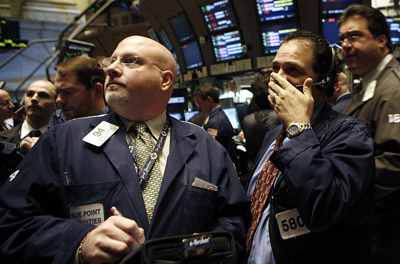
In the week prior to 9/11, an “extraordinary” amount of put options were placed on United Airlines and American Airlines stocks. If you are unfamiliar with the stock market, a put option is financial contract between two parties that will offer the buyer insurance against a company’s excessive loss. Someone who purchases a put option is expecting a stock to drop or they are protecting their assets. Between September 6 and 7, 4,744 put options were purchased on United Airlines stock, compared to 396 call options. On September 10, 4,516 put options were purchased on American Airlines, as compared to 748 call options. The trading activity was 600% above the normal level. United and American Airlines were the only two companies who had planes hijacked on 9/11. There were also an abnormal number of put options purchased in companies who had a stake in the World Trade Centers.
The majority of the suspicious trading was linked to Deutsche Bank Alex Brown. On September 12, 2001, the head of the bank, Mayo A. Shattuck III, resigned from office. The previous director of the bank was A. B. Krongard, who is the former head of the CIA. Citigroup Inc and Morgan Stanley also received an abnormal number of put options, and both companies held offices in the World Trade Centers, and saw a decrease in stock price after the attacks. On September 10, 2001, Raytheon, a defense contractor, had an anomalously high number of call options traded. The Securities and Exchange Commission launched an insider trading investigation, in which Osama Bin Laden was a suspect, but no action was taken. The trading was traced to areas all over the world, with most activity occurring in the UK, Italy, Germany, Japan, Switzerland, France and the US.
In the days prior to 9/11, the Chicago Exchange saw the highest number of United and American Airlines options traded in history. The names of the investors remain a mystery, because they never claimed their money. After it was discovered that a single U.S.-based institutional investor, with no conceivable ties to al Qaeda, purchased a large amount of these options, the 9/11 Commission dismissed the importance of the events. Unfortunately, the abnormal trading did not tip off law enforcement, as intelligence agencies constantly monitor the stock exchange and the sudden rise in activity could have allowed analysts to “connect the dots” and see that a major event was about to take place involving American Airlines, United Airlines and The World Trade Centers. However, nobody could have imagined the scale of the tragedy.
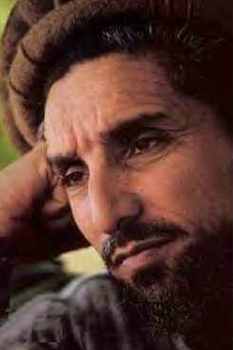
In 1979, the Soviet Union began their ten year long conflict with Afghanistan. Ahmad Shah Massoud was a military leader who played a leading role in driving the Soviet army out of Afghanistan in the late 1980s. His military prowess made him a hero in Afghanistan, earning him the nickname Lion of Panjshir. During the war, Massoud was known for his strategic mass ambushes against Soviet and Afghan convoys. In 1983, the Soviets offered Massoud a truce, which he accepted. He then turned his attention to expanding the Afghan resistance movement, and liberating the northern provinces of Afghanistan. Massoud’s military forces were considered the most effective of all the various Afghan resistance movements.
In the middle of the 1990s, the Taliban took control of approximately 90 percent of Afghanistan. In response, Massoud formed an alliance to fight the Taliban, and provided shelter for people fleeing Afghan cities. However, on September 9, 2001, two days prior to 9/11, Ahmad Shah Massoud was killed by a suicide bomber at Khwaja Bahauddin, in Takhar Province, northeastern Afghanistan. The assassins may have intended to attack several Northern Alliance council members simultaneously, because others were also killed. Prior to his death, Massoud had warned the European Parliament that a terrorist attack was evident. The timing of the assassination is considered significant by people who believe Osama bin Laden ordered the murder, and wanted Massoud dead before staging the 9/11 attacks. Ahmad Shah Massoud died a national hero, and hundreds of thousands of people attended his funeral. The date of his death, September 9, is observed as a national holiday in Afghanistan, known as Massoud Day.
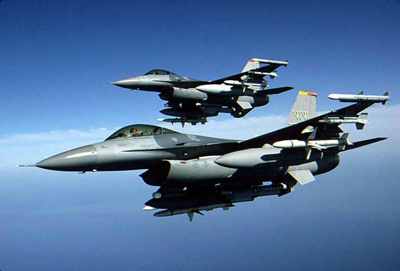
On September 11, 2001, the United States government held a series of military exercises and drills. Operation Northern Vigilance was a NORAD operation, which involved deploying fighter aircraft to the northwestern part of North America, specifically Alaska and Northern Canada. The exercise was one part simulation, one part real world. It was in response to a similar test acted out by Russia on September 11, where long-range bombers were dispatched to Russia’s high north. The exercises were immediately called off after the news of the terrorist attacks, and all simulated information was purged from NORADs computer screens. However, the event was a distraction for the US government on 9/11.
Operation Northern Vigilance was not the only US exercise planned for September 11. A series of war games were also acted out, specifically Global Guardian. Global Guardian is an annual, command-level exercise held in the United States. It is an important task, and the purpose of the drill is to test and validate US nuclear command, control and execution procedures. Vigilant Guardian is an exercise that was run in conjunction with Global Guardian. It involved a simulated bomber attack from the former Soviet Union. The drill was conducted in real time, and appeared legitimate in offices and on computers, but without any planes in the air. One of the drills included was a traditional simulated hijacking.
The National Reconnaissance Office drill that was being conducted on September 11, 2001, is the strangest. In the exercise, a simulated small aircraft crashed into one of the towers at the NRO headquarters. No plane was involved in the drill, but to simulate damage from the crash, some stairwells and exits were closed off. A bioterrorism exercise was planned for September 12, 2001. It was named Operation Tripod and included a real life test of the US plan to distribute antibiotics to an entire city population during a bioterrorism attack.

In the months before and after September 11, 2001, the United States was bombarded with a series of cyber attacks. A group of criminals exposed vulnerabilities in the Microsoft operating system, and created a buffer overflow virus, which executed arbitrary code and infected hundreds of thousands of computers. By July 19, 2001, the amount of infected hosts reached over 350,000 zombies. A series of separate viruses named Code Red I and Code Red II crippled valuable servers and made calculated attacks on US government computers.
On September 18, 2001, a new virus attacked United States operating systems. The worm was given the name Nimda, and it was an advanced version of Code Red II. Some might say that the Code Red viruses were created in preparation for the much larger Nimda attack, which was executed the week following the attacks on the World Trade Center and Pentagon. Due to the release date of the virus, members of the American government speculated on a link between the cyber attacks and Al Qaeda, but this theory ended up proving unfounded. The American media did not report much on the virus because of the terrorist attacks.
Multiple propagation vectors allowed Nimda to become the Internet’s most widespread and dangerous virus. It took only 22 minutes for the worm to rip through the American financial sector, causing over $3 billion in damage. The Nimda virus was so effective because it used five different infection vectors. People could, and still can, get the virus via e-mail, open network shares, infected websites, exploitation or via back doors left behind by the Code Red II virus. The group of people behind the Nimda virus and the theft of billions of dollars are unknown. The event greatly damaged the world’s financial sector and economy.
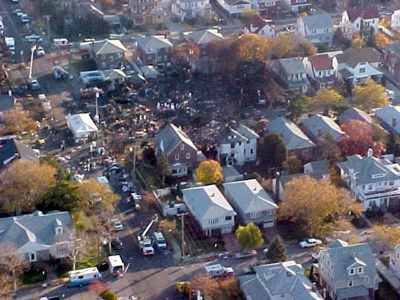
In the months following September 11, 2001, there was a wave of international accidents and events. On September 21, 2001, the AZF chemical factory located near Toulouse, France exploded. The event occurred when three hundred tons of ammonium nitrates ignited. The blast left a crater with a depth of 20 to 30 m (65 to 100 ft), and with a diameter of 200 m (650 ft). It was a major incident in France, and 29 people were killed. The event is recognized as an environmental catastrophe, and the total damages already paid by insurance groups are exceeding 1.5 billion euros. The blast is believed to have occurred due to the improper handling of ammonium nitrate, including the mixing of chemical impurities. However, on October 2, 2001, France’s then Environment Minister, Yves Cochet, announced that the explosion “may have been a terrorist attack” and identified Hassan Jandoubi as a person of interest.
On October 4, 2001, Siberia Airlines Flight 1812 crashed over the Black Sea. The plane was en route from Tel Aviv, Israel, to Novosibirsk, Russia, and all 78 people aboard were killed. The crash was initially thought to be a terrorist attack, since an Armenian plane near the scene reported seeing the Russian plane explode before it crashed into the sea. However, American intelligence reported that the crash was due to an errant S-200 surface to air missile fired as part of a Ukrainian Air Defense Forces exercise. Many people have labeled this hypothesis unlikely, considering the missiles range and safety features, claiming that the US was in fear of mass hysteria with yet another terrorist attack in the weeks following September 11. Ultimately, the government of Ukraine officially recognized their military’s fault in the accident and started negotiating compensation payments for victims’ relatives.
On November 12, 2001, the United States experienced its second deadliest aviation accident in history. It occurred when American Airlines Flight 587 crashed into the Belle Harbor neighborhood of Queens, New York. The accident took place two months after the September 11 terrorist attacks, and it caused panic in New York. Thousands of people witnessed the Airbus A300 crash to the ground, killing all 260 people on board. Many people reported a fire and explosion before the plane crashed, but the National Transportation Safety Board attributed the disaster to the first officer’s overuse of rudder controls. Al-Qaeda has listed the crash among its successes, but physical evidence was never presented indicating terrorist activity. Surprisingly, the story was widely underreported in the United States, considering the magnitude of the crash. In the months after the tragedy, rumors were circulated that suggested that the plane was exploded by a shoe bomber, similar to the failed attempt of Richard Reid, but these claims are unsubstantiated.
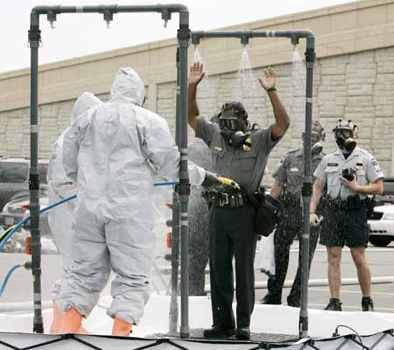
Most people are familiar with the wave of anthrax attacks waged against the United States in the weeks following September, 11. Beginning on September 18, a group of letters containing anthrax spores were mailed to US media outlets, and the offices of two US senators. In all, five people were killed in the terrorist activity, and seventeen others were seriously affected. The letters addressed to the US senators, Democrats Tom Daschle of South Dakota and Patrick Leahy of Vermont, were laced with a highly refined dry anthrax powder. Shortly after the first wave of attacks, two letters were sent to the New York Post and NBC News. The letters contained threats mentioning 9/11, and implied a new wave of terrorist activity. For this reason, it was highly reported in America that Al-Qaeda was behind the 2001 anthrax attacks.
On September 11, George W. Bush and the White House staff began taking a regimen of Cipro, which is a powerful antibiotic. This activity has led to a list of conspiracy theories accusing the US government of having pre-knowledge of the anthrax attacks. The investigation into the crimes was one of the longest and most complex in the history of law enforcement. Ultimately, investigators began to focus their attention on an American scientist named Bruce Edwards Ivins. Ivins worked at the US government’s biodefense labs at Fort Detrick in Frederick, Maryland. After extensive research, on August 6, 2008, federal prosecutors declared Bruce Edwards Ivins to be the sole culprit of the 2001 anthrax attacks. He committed suicide on July 29, 2008, after learning that he was going to be formally charged with the crimes. One would think that a media circus would have ensued, but little was mentioned about Bruce Edwards Ivins in the US press. His motives for blaming the attacks on Al-Qaeda are unknown.
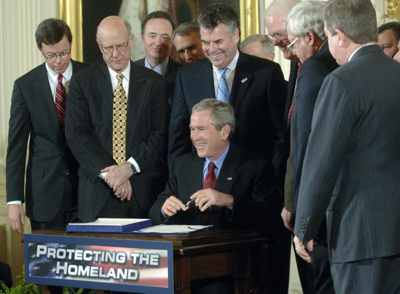
On October 26, 2001, US President George W. Bush enacted the USA PATRIOT Act. The bill was in direct response to the terrorist attacks that occurred on September 11. The goal of the Act was to reduce restrictions on law enforcement and government officials when investigating criminal activity. It gave international law organizations the right to probe and search citizen’s e-mail, medical, financial and personal records. Some of the main sections of the law enacted restrictions on foreign intelligence gathering, expanded the Secretary of the Treasury’s authority to regulate financial transactions, and broadened immigration laws in regards to detaining and deporting immigrants suspected of terrorism-related acts. The bill was passed by a wide margin in the US Congress. It was supported by some people and seen as an attack on civil liberties by others.
Entire websites have been dedicated to examining the Patriot Acts apparent lack of safeguards surrounding the rights of American citizens and foreign advocates. The bill made significant amendments to over 15 important constitutional statutes. The sections of the Patriot Act discussing Internet supervision and monitoring are confusing and extensive, ultimately reaching far beyond simple e-mail correspondence. One of the most surprising aspects of the USA PATRIOT Act is the lack of public and media debate regarding its introduction. Before September 11, provisions of the Act related to electronic surveillance were proposed and highly debated. However, many people feel that the Patriot Act has helped make America a safer place and stopped terrorist activity. In the first part of 2010, Barack Obama signed a one-year extension on several provisions in the Patriot Act.








